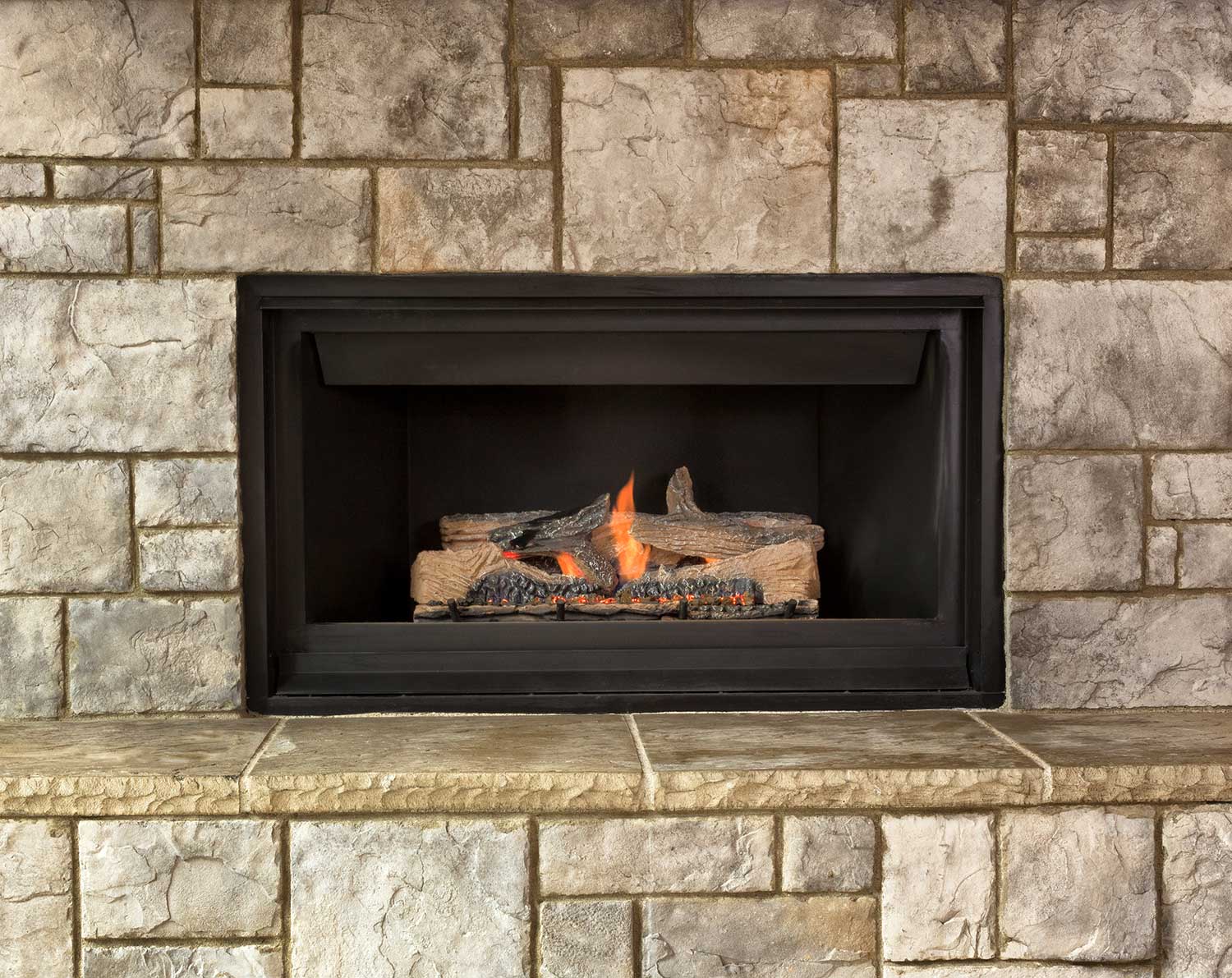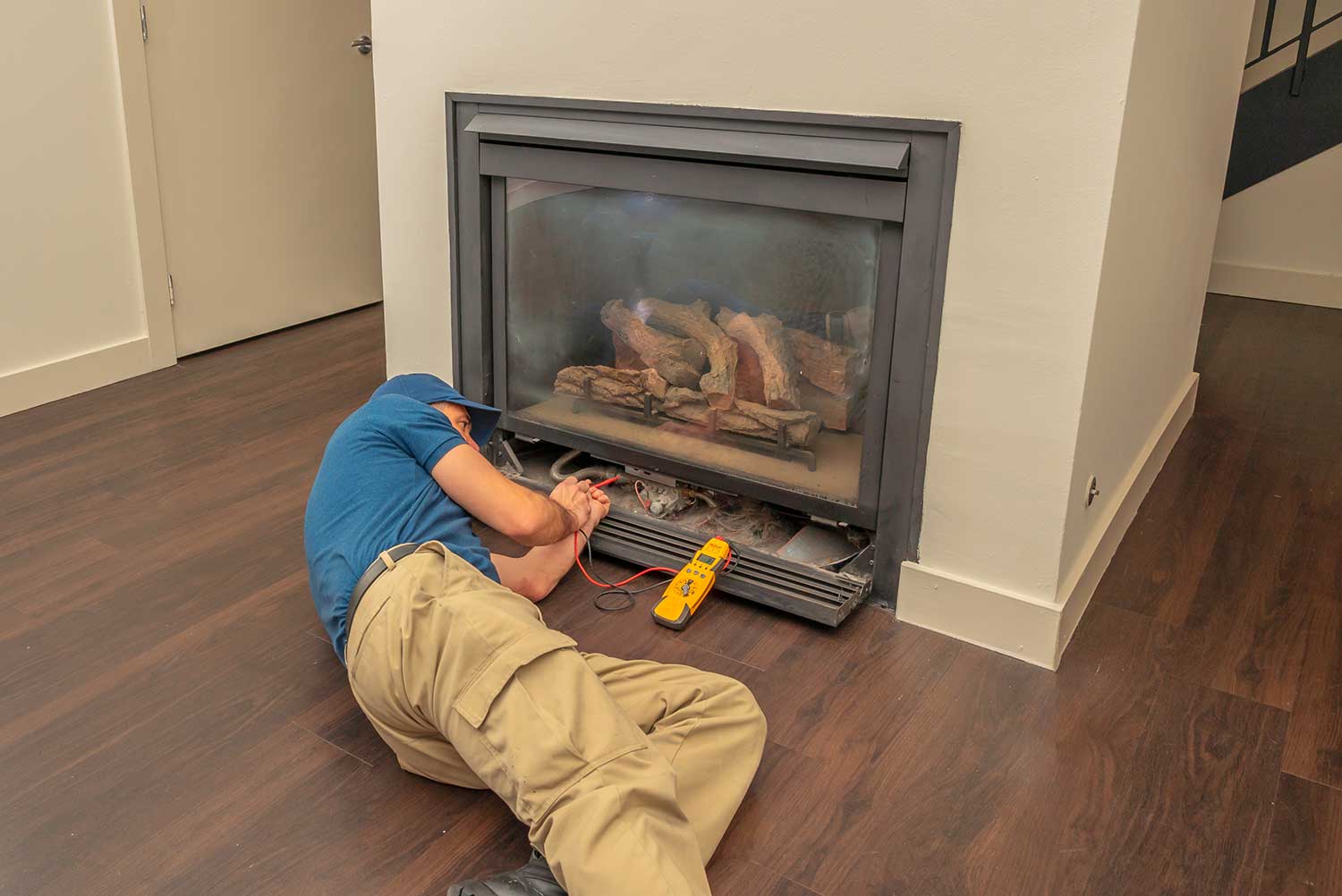Suppose your gas fireplace won't start, then your home won't stay warm enough during the winter months. What do you do when this happens? We have researched for you how to pinpoint this issue.
If your gas fireplace won't start, then there are some components that you need to check:
- Bad Spark Igniter
- Worn Thermocouple
- Bad Gas Regulator
- Stuck Gas Valve
- Faulty Pilot Light
- Unsecure Fireplace Vent Cap
- Loose Connections
- Bad Electrical Ignition
- Broken Flame Sensor
- Bad Fireplace Module
As you can see, there are several things that you will need to check to figure out why your gas fireplace won't start. But, not to worry, we will look at these fireplace parts and what to look for. In addition, we will discuss how to reset your gas fireplace, so read on!

Gas Fireplace Won't Start—What To Do?
Gas fireplaces work by igniting gas and air, which creates a flame. The gas fireplace will have a pilot light lit to start the gas fireplace. The pilot light will then ignite the gas and air, which will create the flame.
You may run into times when your gas fireplace has issues starting for one reason or another. Before you call a specialist, you can troubleshoot this issue yourself.

Let's take a look at the things to check for when your gas fireplace won't start:
Bad Spark Igniter
If your gas fireplace isn't igniting, then the first thing you will want to check is the spark igniter. The spark igniter is responsible for creating the spark that will ignite the gas and air.
To test if the spark igniter is working, you can use a lighter. Light the gas fireplace and hold the lighter to the spark igniter. If you notice a change in color or popping noise, then your spark igniter should be working correctly.
If you do not hear a popping noise from the spark igniter when using a lighter, this may indicate that the spark igniter is faulty. In this case, you will want to replace it.
Worn Thermocouple
If your gas fireplace isn't igniting, then the next thing you will want to check is the thermocouple. The thermocouple is responsible for sending information to the gas valve about the temperature of the pilot light.
If the thermocouple is faulty, it may not send the proper signals to the gas valve, which means you will not have enough gas to create a flame.
To test if your thermocouple is working correctly, you can use an ohmmeter. With the fireplace off, place one probe into each of the screws on the thermocouple and check the reading.
If you do not get a reading or infinite resistance, your thermocouple is faulty and will need to be replaced.
Bad Gas Regulator
The gas regulator controls how much gas comes through to create the flame. So if your fireplace is struggling to start, this may be due to a faulty gas regulator.
To test if your gas regulator is faulty, you can use the ohmmeter again. With the fireplace off, place one probe into each of the screws on the gas regulator and check the reading, just like with the thermocouple.
If you get a reading that is not very high, your gas regulator is faulty and needs to be replaced.
Stuck Gas Valve
If no gas is coming through, the next issue could be a stuck gas valve. A blocked or stuck valve will make it so that there isn't enough room in the line for the gas to move through.
To test if the gas valve is stuck, you can use a pipe cleaner. With the fireplace off, remove the screen and insert the pipe cleaner into the hole where the gas comes in.
If you can move the pipe cleaner around freely, your gas valve is not stuck. However, if you cannot move the pipe cleaner around freely, your gas valve is stuck and will need to be replaced.
Faulty Pilot Light
If your gas fireplace isn't igniting, then the next thing that could be causing the issue is a faulty pilot light. A faulty pilot light will make it so that there isn't enough gas moving towards the spark to create a flame.
To test if the pilot light is faulty, you can use a lighter. For example, try to light the gas fireplace and hold the lighter to the pilot light. If you notice that the flame is flickering or going out, your pilot light is faulty and will need to get a replacement.
Unsecure Fireplace Vent Cap
If your gas fireplace isn't igniting, you will want to check the fireplace vent cap. The vent cap is responsible for letting out the smoke and fumes from the fireplace. If the vent cap is not secured correctly, it could let in the wind, which will blow out the flame.
To test if your fireplace vent cap is working correctly, you can lift on the cap. If it moves quickly, your vent cap is faulty and must replace it.
Loose Connections
If you have checked all of the above and your gas fireplace is still not igniting, then the next thing you will want to check is the connections. Loose connections can cause a weak flame or no flame at all.
To test if the connections are loose, you can use a voltage tester. With the fireplace off, remove the cover of the electrical box and place the probes of the voltage tester on each of the wires.
If you see a reading, then your connections are good. If you don't see a reading, your connections are loose and need to be tightened.
Bad Electrical Ignition

If you have checked all of the above and your gas fireplace is still not igniting, you will want to check the electrical ignition. An insufficient electrical ignition will make it so the fireplace can't create a spark.
To test if the electrical ignition is bad, you can use a multimeter. First, turn on the multimeter to AC Voltage mode. Then, with the fireplace off, insert one probe into each of the screws on the electrical ignition and check the reading.
If you get a reading, but it isn't very high, your electrical ignition is bad and will need to replace it.
Broken Flame Sensor
If you have checked all of the above and your gas fireplace is still not igniting, you might have a faulty flame sensor. A broken flame sensor will make it so that the fireplace can't detect a fire.
To test if your flame sensor is broken, you can use a multimeter. Turn on the multimeter to Ohms mode and insert one probe into each screw of the flame sensor connector.
If you get a reading that isn't very low, your flame sensor is faulty and will need to replace it.
Bad Fireplace Module
If you have checked all of the above and your gas fireplace is still not igniting, you might have a bad fireplace module. A bad fireplace module will make it so that the fireplace can't turn on at all.
To test the module, ensure that it is grounded properly and the wire harness is securely connected.
How Do you Reset a Gas Fireplace?
If your gas fireplace is in a lock-out position where it won't light, then you can reset the system. To do so, you will need to locate the reset switch.
Typically the reset switch will be located on the left or right of your fireplace. If it's not there, take off the fireplace's electrical cover and locate the module. The module will have an on/off switch on the top of it.
Once you have located the reset switch or reset button, you need to turn it off and turn it back on. You will hear a beep signaling that the fireplace has been reset.
Where is the Pilot Switch in my Fireplace?
Typically the pilot switch will be located on the left or right of your fireplace. If it's not there, take off the fireplace's electrical cover and locate the module (a black box with an on/off switch). It will normally be a black nob or black switch.
How Do you Reignite the Pilot Light on a Gas Fireplace?
To reignite the pilot light on a gas fireplace, you must locate the gas control knob. Now hold down the gas control knob and press the igniter button until the flame lights. Sometimes it will take multiple presses before the pilot light ignites.
Should the pilot light always be on in a gas fireplace?
Most gas fireplaces will have a continuous pilot light. This means that the pilot light will always be on if your unit is on then. It will only go off if you manually turn off the unit.
Final Thoughts
Call a professional if you have checked all of the above and your gas fireplace is still not igniting. If at any time while trying to light your gas fireplace you smell gas - stop immediately and turn off the fireplace. Trust us; it's better to play it safe than risk getting hurt!
We hope that this article has been helpful. If it has, then take a look at our other articles:
How To Insulate Behind A Fireplace
